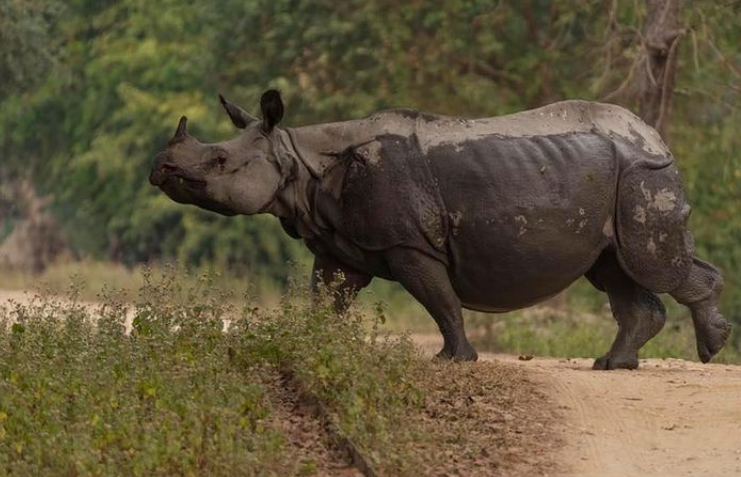Human wildlife conflict is when encounters between humans & wildlife lead to negative results such as loss of property, livelihoods and even life. This is a growing issue worldwide. India is also one of the countries facing severe consequences because of the human wildlife conflicts. But there are several technological advancements which have proven to be useful to mitigate these conflicts ultimately leading to the conservation of wildlife species and the protection of human lives.

Need for new innovative strategies to tackle Human Wildlife Conflict
One of the primary causes of human-wildlife conflict is the increasing fragmentation of habitats due to various reasons like urbanization. The country’s growing population, especially in rural areas, has also led to an increase in the demand for natural resources & agricultural land. This all puts pressure on wildlife eventually leading to the conflicts.
These conflicts between humans & animals have resulted in an increasing number of fatalities. This has led to the need for new strategies to be adopted to mitigate the conflicts. The use of technology to mitigate human-wildlife conflict has become very essential lately. In India also, the Government and various NGOs have been working tirelessly to create solutions for this problem.
Drones
Drone technology is one of the most effective ways for monitoring wildlife. With the help of drones, forest staff & conservationists can survey remote areas of wildlife reserves, monitor the movement of animals and gather information to predict their further movement. Using this information we can try to mitigate the conflict. Drones also help in identifying poachers and illegal activities in protected areas.
Camera Traps
Another technology used to mitigate human-wildlife conflict is the installation of camera traps at various places. This technology allows conservationists to track the movement of wildlife including those that are threatened and endangered, without disturbing their natural habitat. Camera traps are also useful in detecting poaching and illegal hunting activities, allowing rangers to take action before it is too late.
Electric fencing
Electric fencing is another technological advancement being used for mitigation of human-wildlife conflict in India. This type of fencing uses a low voltage electric charge. It acts as a deterrent for animals and prevents them from entering the farmland or human settlements. It is a cost-effective & eco-friendly solution that has helped prevent elephant attacks on human settlements and also reduce crop damage.
Mobile Apps
Mobile applications are also being used to mitigate human-wildlife conflict in India. One such example is the Human-Elephant Conflict (HEC) application, which helps track the movement of elephants and helps prevent crop damage and human fatalities. The application has been successful in reducing human-wildlife conflict and also helps in monitoring the elephants’ health and behavior.
Radio collars
This technology is mainly used for tracking the movement of animals in real-time, such as elephants and tigers. By monitoring their movements, conservationists can create alerts for the local communities and take preventive measures to avoid conflict with humans.
Artificial Intelligence (AI)
AI can be very helpful in identifying patterns of behavior and habitat use of animals allowing conservationists to predict their movement and behavior and thereby preventing conflicts. AI technology is being used to study various animals like tigers, leopards, and elephants in India, allowing researchers to predict the animals’ movement and behavior to prevent human-wildlife conflicts.
Human Wildlife Conflict Case Study
The Anamalai hills in India support the second largest elephant population in the country. A long-term study of elephants in the Valparai plateau in Anamalai hills has helped identify important habitats, locations, and seasons of conflict. The Nature Conservation Foundation has put mitigation measures in place to reduce damage and facilitate elephant movement, including changing storage locations, installing electric fences, and implementing an early warning system (EWS).
The EWS uses an elephant informant network and bulk-SMS system to inform people about elephant presence and movement, as well as GSM-based elephant alert red indicator lights and a prototype GSM-based voice system for public transport buses. This is a good example to understand that empowering local communities to use science-based, innovative, and proactive measures can build coexistence between people and elephants.
The Way forward for Human Wildlife Conflict
Overall we can see that good results are seen after adopting technological solutions such as drones, camera traps, electric fencing, mobile apps etc to mitigate conflicts between humans and animals. The use of technology to mitigate human-wildlife conflict in India is a significant step towards achieving long-term conservation and protection of endangered species and the environment.
Help us Help Them! Think Wildlife Foundation is a non profit organization with various conservation initiatives. Our most prominent campaign is our Caring for Pari intiative. Pari is a rehabilitated elephant at the Wildlife SoS Hospital. 25% of the profits from our store are donated to the elephant hospital for Pari. Other than buying our wonderful merchandise, you could donate directly to our Caring For Pari fundraiser.
Written by: Ram Dayal Vaishnav
